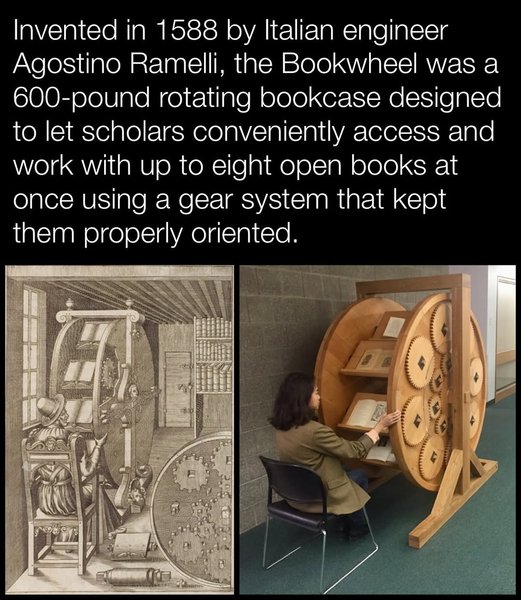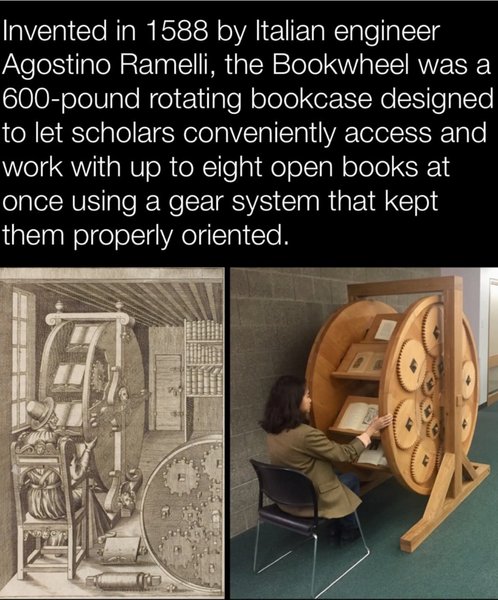
The Bookwheel, invented in 1588 by Italian engineer Agostino Ramelli, was a heavy, 600-pound wooden rotating bookcase that let scholars easily use up to eight open books at once. It had a clever gear system to keep the books upright as the wheel turned by hand, saving time for readers who didn’t have to fetch books from shelves. Featured in... See more
instagram.com
